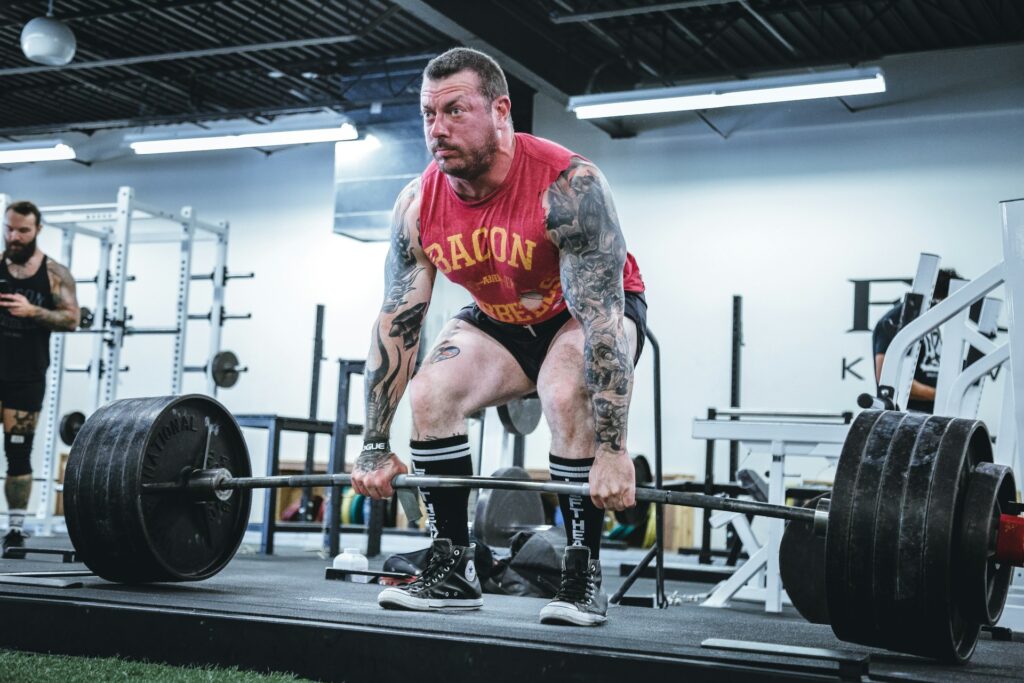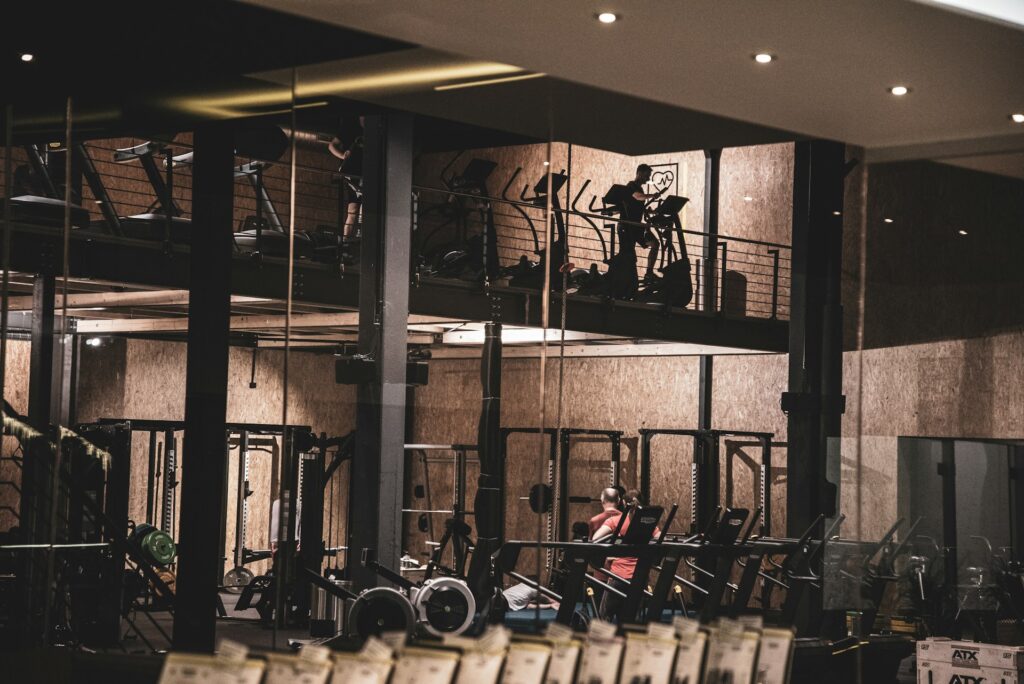Why are standards so important?
Without standards, we lose site of how movement, lifts and other forms of activity should be performed. Standards help us keep our output to a high level while remaining consistent. Its all well and good giving 100% to a workout but no good if that high effort session only happens once a month, when instead you could apply 80% effort consistently over the course of 2-3 sessions a week and see far better results.
Having standards will help you and others to stay accountable, especially if you are working towards a very specific goal. Using a needs analysis, you can understand exactly what is required to get to where you want to be and then use that as a benchmark for all future sessions and days ahead.
In this article, we will be looking into the following categories:
- Lifting standards
- Nutrition standards
- Activity standards
- Sleep standards
Lifting standards
ROM/depth: Setting consistent ranges of motion will ensure that week to week you are achieving the same/more stimulus as you progress. When it comes to volume, load is only one half of the equation, with distance being the other. A 50kg squat to full depth will give the same if not potentially more stimulus than a 100kg squat half way down as long as proximity to failure remains the same. Some muscles also grow at longer lengths due to their length tension relationship so it is always worth getting the full range of motion available to you.
Tempo/speed: Tempo and speed will determine how much tension the muscle is under at any given moment. Keeping these at set speeds will ensure that as you progress, only the force generated by muscular contraction will be moving the weight. A rep that has a 1 second concentric (you moving the weight) and a 1 second eccentric (you resisting the weight) will have less tension than a controlled 1 second concentric and a 3 second eccentric and will then result in you achieving less stimulus and having to work for longer to achieve the same result.
Effort/proximity to failure: Muscles will grow best when trained somewhere from 4-6 reps away from failure to failure itself. There is a trade of as training closer to failure elicits better results but is also harder to recover from, so pick your poison. You must set a standard though as training 6 reps in reserve one week and 0 reps in reserve the next place your body under drastically different demands and also place you in an environment where progressing is extremely difficult. You cannot expect adaptation if you are not giving you body a reason to adapt.
Consistent exercise selection: you can get away with training different/similar movements every time you do said session as the main driver of adaptation is the proximity to failure. On the other hand, you cannot expect yourself to get better at a movement if you’re rarely training it. If every time you come to the gym you switch between front squat, back squat, hack squat and pendulum squat then how can you expect yourself to get better and stronger at any of them. Your body needs time to adapt to movement patterns, so allow it that time.

Photo by Alora Griffiths on Unsplash
Eating standards
Calories/portion sizes: I know this is a soft spot for those who revolt to ‘restricting food’ but if you have a target such as fat loss, then consistently going over your allocated food targets that are designed to initiate said fat loss is about as useful a glass hammer. Equally, under eating is just as bad in both a fat loss and muscle building phases as this will result in more fat loss but also more misery in the former and won’t contribute to the addition of muscle in the latter. If you cant stick to them, then accept that this goal simply isn’t for you.
A variety of foods: I’m not asking you to eat the same 4 things week in week out but I am suggesting that to make your life easier, selecting a core group of foods that taste nice, are easy to cook and are affordable. From a health standpoint the variety will be good as various colours and textures provide different nutritional elements, but it will also prevent you from becoming bored with food choices.
Food/meal timings: Hunger hormones will signal based off of time in the day and based off the satiety level, calorie content and blood sugar interaction of your previous meal(s). In simple terms you will usually get hungry at a similar time each day. This is good as it builds routine and familiarity. This will alter if for example a meal has been skipped. This can create hunger signals to spike for often and can lead to food choices and decisions that wouldn’t have been made if the day was better planned and prepared.
Moderation of treat foods: No one actually knows what moderation is because each persons needs and demands for food will differ. There is a point where you can assess what you are eating and decide if what you are consuming is within reason. For example a bodybuilder consuming 5000kcals a day can afford to have treat items daily while still hitting the remainder of their nutritional targets, whereas a combat sports competitor who is attempting to make weight for their next event will not have anywhere near this level of flexibility. You have to remain objective and have these items within reason.

Photo by Mark DeYoung on Unsplash
Activity standards
Hitting your steps: View steps as a commitment to a baseline levels of activity. They ensure that even on particularly stressful or busy days that you have ticked of some level of movement and prevent you from becoming sedentary. This doesn’t have to be looked at on a day by day basis and can instead have a weekly target set, however this doesn’t mean doing 11,000 steps on Monday followed by 600 on Tuesday. Again they have to be hit within reason otherwise your day to day expenditure will be all over the place, resulting in undulating levels of fatigue day by day.
Hitting your cardio: we can look at cardio in two metric which are solely for fitness and solely for calorie burn. With the former, consistency is key to perform better. The longer you go without performing your CV work, the harder it will be to get better, likewise doing it too often will cause excess fatigue. With calorie burn, the tool is being used to keep you in a deficit of calories so although one missed day isn’t the end of the world, it could be the difference between fat loss and no fat loss on a micro scale.

Sleep standards
Getting similar quality/quantity: Sleep is your opportunity to rest, repair and regulate hormones. Without good quality and quantity of sleep, you can see an increase of stress & anxiety, poor hunger signalling, reduced ability to build muscle and lose fat, poor cognition and then poor overall adherence to the gym/nutrition/activity.
Setting a bed time: This isn’t fun but is necessary as your body functions off of an internal clock. It will get tired around a very similar time each day as melatonin and serotonin in secreted due to the onset of darkness. Prioritise other factors that help promote this process setting in such as reduced light, not eating too late, limited screen time etc… Doing this will then allow you to start the next day fresh and ready to continue with all the other factors above.

Photo by Gregory Pappas on Unsplash
Conclusion
If you are after high levels of results within physique development regardless of if this is fat loss or muscle building phase then you need to appreciate all the factors both in and out of the gym that contribute to building this. A lot of this information may be overwhelming to deal with at once, so start with one category than you can consistently monitor and then move to the next one when you are ready to take the leap.
–
If you want to see more information on training and nutrition, see my latest Instagram posts at @the_biomechanics_coach. Or, if you are interested in exploring other areas of your training and becoming the best athlete you can be, what about reading my last post on Compounds & Isolation’s.



